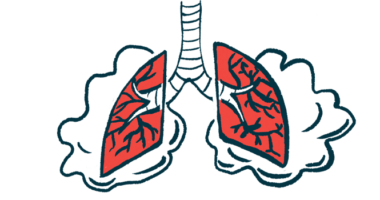Rare case of cold agglutinin disease in teen tied to early-onset lupus
AIHA occurs as a complication in roughly 10% of people with SLE

A teenage girl in the U.K. was treated after developing cold agglutinin disease (CAD) as a rare complication of systemic lupus erythematosus (SLE), the most common form of the autoimmune disease lupus.
CAD is a type of autoimmune hemolytic anemia (AIHA) that’s marked by immune attacks against red blood cells. AIHA is a rare complication of SLE, but cases involving CAD are even more rare. The teenager’s case adds to the limited literature on CAD as an early manifestation of SLE and underscores “the importance of prompt, comprehensive autoimmune and [blood-related] evaluation in adolescents with unexplained anemia and multisystem involvement,” wrote the researchers. Their case report, “A Rare Case of Cold Antibody-Mediated Autoimmune Haemolytic Anaemia in Early Systemic Lupus Erythematosus,” was published in Cureus.
AIHA is typically classified into three types — warm AIHA, CAD, and mixed AIHA —based on the temperature at which self-reactive antibodies best bind to red blood cells. In CAD, antibodies called cold agglutinins bind to red blood cells at lower temperatures, marking them for destruction, called hemolysis.
In all forms of AIHA, these abnormal immune attacks lead to hemolytic anemia, or low red blood cell counts due to excessive hemolysis, fatigue, and other symptoms. Classified as primary when no clear cause is known, the condition is referred to as secondary when it occurs alongside other conditions, most often cancer, infections, or another autoimmune disease.
While AIHA occurs as a complication in “approximately 5%-10% of people with SLE at some point during the disease course,” the researchers wrote, CAD is even more uncommon, “with few published cases reports present in the literature,” all occurring in women.
A diagnosis of secondary CAD
The girl, 16, had no prior health issues, but went to the emergency room after nearly a month of feeling unwell. She reported general weakness, fatigue, joint pain that was worse in the morning, fainting episodes, and Raynaud’s phenomenon — a symptom common to both CAD and SLE where fingers turn pale and numb when exposed to cold.
She had trouble eating and described feeling so dizzy in the morning that she struggled to get out of bed. The girl’s mother had been diagnosed with diffuse cutaneous systemic sclerosis, another autoimmune disease, suggesting a possible genetic predisposition to autoimmune conditions.
A physical exam revealed swollen lymph nodes in her neck, but no signs of an enlarged liver or spleen. A lymph node biopsy ruled out infections or cancer, but blood tests revealed two self-reactive antibodies — antinuclear antibodies and anti-double-stranded DNA — that are highly specific to SLE.
The girl also showed signs of CAD, including severely low hemoglobin, high levels of hemolysis markers, the presence of cold agglutinins, and red blood cell clumping under a microscope. Hemoglobin is the protein in red blood cells responsible for carrying oxygen throughout the body.
Her physicians believed she developed CAD as a complication of SLE, an autoimmune disease marked by attacks against healthy tissue, most often in the skin, joints, and kidneys.
She was given corticosteroids, a type of anti-inflammatory and immunosuppressive treatment, starting with three days of high-dose methylprednisolone into a vein, followed by daily oral prednisolone. The girl’s doctors decided a blood transfusion wasn’t needed as her hemoglobin levels began to rise and her fatigue resolved.
“In patients with SLE and associated AIHA, blood transfusions should be carefully considered and reserved for life-threatening situations,” the researchers wrote, as repeated blood transfusions increase the risk of developing antibodies against delivered red blood cells.
The girl was discharged on a treatment plan that included medications for long-term immune system modulation. At a follow-up, she continued to see clinical improvement, including better joint mobility, increased energy, and higher hemoglobin levels.
“This case highlights the need for vigilance in evaluating young patients with unexplained hemolytic anemia, as SLE with atypical presentations can pose diagnostic challenges, but respond well to timely intervention,” they wrote.







